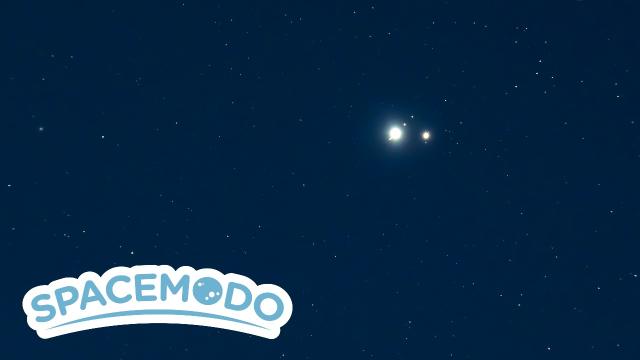March is almost here which means it’s time for Spacemodo! What a month we had in February with not one, not two, but three Mars arrivals. While the Perseverance rover continues to send us the goods from the red planet, here’s what else you can look forward to in astronomy news for March.
March’s astronomy highlights
March equinox
March heralds the arrival of a new season but it also marks the first quarter of the Earth’s journey around the sun. On the March equinox, which is scheduled for the 20th, the sun will rise and set at nearly exactly due east and due west, according to EarthSky.
This makes for a great opportunity to learn where due east and west sit in your surroundings. Take note of where the sun rises and sets in relation to familiar landmarks around your home and then you’ll always have a decent idea of which direction due east and west are without a compass!
Apophis fly by
You may have heard of that very large asteroid that may eventually hit Earth one day? Well, the Apophis asteroid is scheduled to tease Earth with a flyby on March 5 (or early March 6 in Australia). It won’t hit us this time — in fact, it will be about 40 times the distance between the Earth and the Moon away, but scientists predict the next pass in 2029 will be a close one, so they’ll be studying the asteroid closely in March.
Rocket launches
There are a couple of satellite rocket launches coming up in March. First up, a SpaceX Falcon 9 rocket will take an additional 60 satellites into space for the Starlink endeavour on March 8. Another Falcon 9 rocket will launch a Dragon cargo supply mission to the International Space Station, which is also scheduled to lift off in March.
On March 25 a Russian Soyuz rocket will launch another 36 satellites for the OneWeb internet installation.
Three planets plus Moon conjunction
After the epic conjunction that was the Jupiter/Saturn kiss earlier in the year, the night sky is set to host another three-planets-plus-moon gathering. Starting on March 5, Jupiter and Mercury will be only 0.3° apart, so check in to see the biggest and littlest planets get real close.
In the following days around March 9 and 10 viewers will be able to catch Jupiter, Mercury, Saturn and the crescent moon in very close proximity in the dawn sky.
Other astronomy dates in March
March 2-6: Mercury at its greatest elongation
March 5: Watch ISS astronauts take a spacewalk
March 5: Jupiter and Mercury conjunction
March 6: Apophis asteroid flyby
March 8: SpaceX Falcon 9 launch
March 8-10: Mercury, Jupiter, Saturn and the Moon can be seen together at dawn
March 13: New Moon
March 20: March equinox
March 25: Soyuz rocket launch
March 28: Full Moon
Now go break out those telescopes and soak in all March has to offer!
